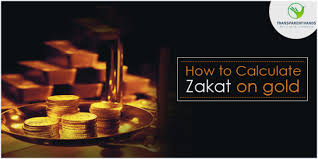Gold, long regarded as a symbol of wealth and stability click here, holds significant value in both cultural and economic spheres. Whether you’re a prospective investor, a jewelry enthusiast, or simply curious, understanding how to calculate the value of gold can be highly beneficial. This guide explores the key factors and methods involved in determining gold’s worth.
1. Understanding Gold Purity
Gold purity is expressed in karats (K), which denote the proportion of gold in an alloy. The purest form is 24 karats, representing 99.9% gold. Common gold purities include:
- 24K: Pure gold
- 22K: 91.6% gold
- 18K: 75% gold
- 14K: 58.3% gold
To calculate the gold content in a piece, use the formula: Gold Content (%)=(Karats24)×100\text{Gold Content (\%)} = \left( \frac{\text{Karats}}{24} \right) \times 100
For example, an 18K gold item has 1824×100=75%\frac{18}{24} \times 100 = 75\% gold.
2. Knowing the Weight
Gold is typically measured in grams, troy ounces, or pennyweights. The troy ounce (31.1035 grams) is standard in international markets. To calculate the value, you need the precise weight of the gold item.
Use a jewelry scale for small items or consult a professional appraiser for accuracy.
3. Monitoring the Current Market Price
The market price of gold fluctuates daily based on supply, demand, geopolitical stability, and economic factors. This price, often referred to as the “spot price,” is quoted per troy ounce. Reliable sources like financial news websites or commodity trading platforms provide up-to-date gold prices.
4. Calculating the Value of Gold
To calculate the value of gold in an item:
- Determine the purity percentage.
- Multiply the item’s weight by the purity percentage.
- Multiply this result by the current spot price.
For example, if you have a 10-gram, 18K gold necklace and the current spot price is $60 per gram:
- Purity: 1824=0.75\frac{18}{24} = 0.75 (75%)
- Gold content: 10 grams×0.75=7.5 grams of pure gold10 \, \text{grams} \times 0.75 = 7.5 \, \text{grams of pure gold}
- Value: 7.5 grams×60 $/gram=450 $7.5 \, \text{grams} \times 60 \, \text{\$/gram} = 450 \, \text{\$}
5. Accounting for Additional Factors
Gold value calculations often go beyond purity and weight. Other considerations include:
- Market Premiums: Buyers and sellers may apply premiums based on demand or rarity.
- Craftsmanship: Jewelry with intricate designs may have additional value beyond the gold content.
- Condition and Wear: Tarnishing or damage may affect resale value.
- Currency Exchange Rates: International transactions depend on current exchange rates.
6. Gold in Investment Portfolios
For investors, the value of gold isn’t just about physical assets. Gold ETFs, mining stocks, and futures contracts provide alternative ways to calculate and benefit from gold’s market movements. Understanding how these derivatives relate to the spot price is crucial for maximizing returns.
Conclusion
Calculating gold’s value combines artistry, science, and market knowledge. Whether you’re appraising heirlooms, investing in bullion, or trading on financial markets, this skill equips you with confidence and precision. Always stay informed about market trends and consider consulting experts for complex valuations. In a world where gold remains a trusted store of value, mastering its calculation is a golden opportunity.

